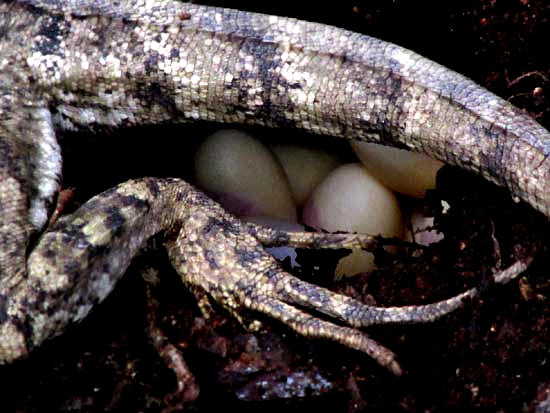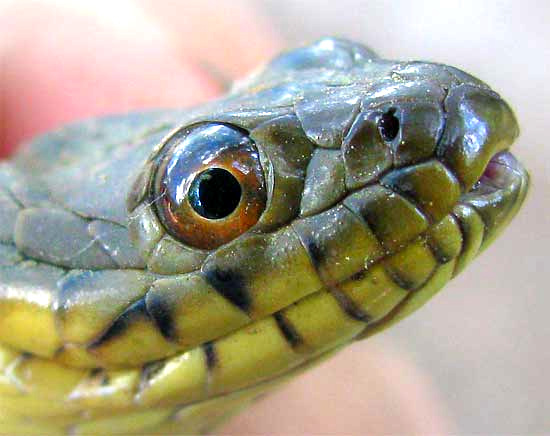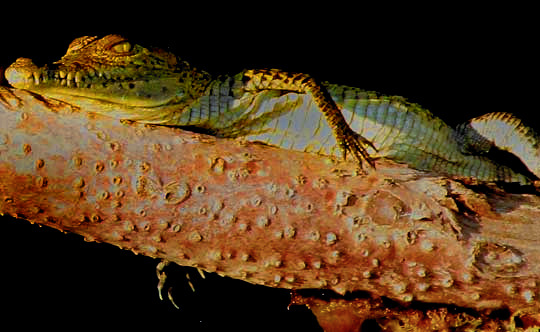- they can't reproduce on dry land
- they can't retain water well in their bodies
- they can't keep their bodies warm during cold weather
When reptiles came along, they went a good way toward solving those problems.
THE REPTILES' EVOLUTIONARY ADVANCES
Reptiles can reproduce without returning to water. Male reptiles came equipped with an ingenious appendage enabling them to insert sperm inside the female's body, no water needed.  Moreover, inside the female, an eggshell formed around the developing embryo, and this enabled the egg to be laid on dry land -- as demonstrated by the Striped Basilisk, Basiliscus vittatus, shown at the right. Dry-land nests can be better defended than an amphibian's typically gelatinous egg-mass simply extruded into water.
Moreover, inside the female, an eggshell formed around the developing embryo, and this enabled the egg to be laid on dry land -- as demonstrated by the Striped Basilisk, Basiliscus vittatus, shown at the right. Dry-land nests can be better defended than an amphibian's typically gelatinous egg-mass simply extruded into water.

With regard to the amphibians' problem of drying out on dry land, the Diamond-backed Water Snake, Nerodia rhombifer, shown at the left displays the reptilian solution: Reptiles are covered with tough, fairly waterproof scales. In the picture, each of those little blocky things covering the entire head is a scale, and other scales cover the entire body.
The third problem, that of keeping the body warm when air temperature grew cold, was not overcome by the reptiles. Or, maybe it was in some of them... Certain of the great dinosaurs may have been able to regulate their body heat, but they're extinct. Today some experts claim that a few reptile species may be somewhat warm-blooded. Whatever the case, most modern reptiles are cold-blooded, and that's still a problem for them when it gets.
REPTILE CLASSIFICATION
Reptiles are traditionally described as animals belonging to the class Reptilia, just as birds belong to the class Aves, and we mammals to the class Mammalia. With modern gene sequencing, it's been found that the situation isn't quite as simple as that arrangement implies. However, the class concept is so useful and rooted in our consciousnesses that most of us continue to speak of it.
Using the Class Reptilia concept, here's how the various kinds of reptiles living today are said to relate:
- Class: Reptilia (reptiles)
- Order: Testudines (turtles)
- Order: Crocodilia (alligator, crocodile)
- Order: Squamata (lizards & snakes)
- Order: Rhynchocephalia (tautara in New Zealand)
Wikipedia provides a special section on reptilian classification, taking into consideration new insights based on gene sequencing, in a section called "Phylogenetics and modern definition."
You might enjoy browsing Naturalist Jim Conrad's field notes on snakes and lizards he's met on his travels.
